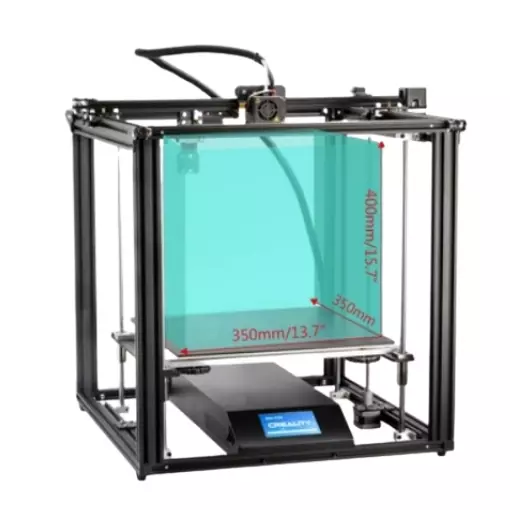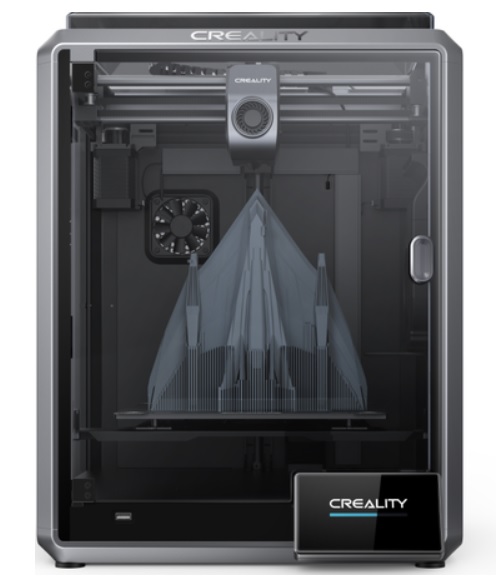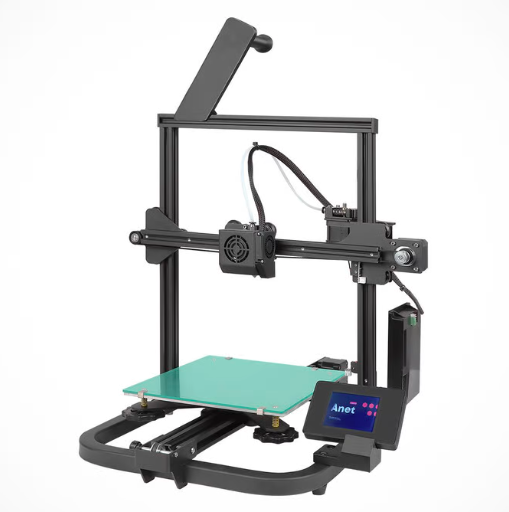Compare Ender 5 Plus vs K1 vs A8 V2
Comparison between the best 3D printers
Choose the best 3D printer at the best price. The cheapest 3D printers are here.
Buy a 3D printer here with 3D Fila.
 |
 |
 |
|
| Model | Ender 5 Plus[BUY Ender 5 Plus] |
K1[BUY K1] |
A8 V2 |
| Estimated price | $599,00 | $399,00 | $129,00 |
| Fabricante | Creality 3D | Creality 3D | Anet |
| Release Year | 2019 | 2023 | 2021 |
| Print Volume [mm] | 350x350x400 | 220x220x250 | 220x220x250 |
| Printer Size [mm] | 632x619x666 | 355x355x480 | 428x441x486 |
| Weight [kg] | 18,2 | 12,5 | 6,2 |
| Power Loss Recovery | YES | YES | NO |
| Enclosed printer | NO | YES | NO |
| Bed Leveling | Automatic | Automatic | Manual |
| Filament End Sensor | YES | YES | NO |
| Bed type | Heated | Heated | |
| Power supply system | Bowden | Direct Drive | Bowden |
| Standard nozzle | 0,4 | 0,4 | 0,4 |
| Maximum Nozzle Temperature [°C] | 260 | 300 | 230 |
| Maximum Bed Temperature [°C] | 100 | 120 | |
| Maximum printing speed [mm/s] | 180 | 600 | 150 |
| Filament holder | YES | YES | YES |
| Camera for supervision | NO | NO | NO |
| Recommended filaments | PLA, TPU, ABS, PETG | ABS, PLA, PETG, PET, TPU, PA, ABS, ASA, PC, PLA-CF, PA-CF, PET-CF | PLA |
| Recommended slicers | Cura, Simplify, Slic3r | Creality Print; Cura, Simplify3D e PrusaSlicer | Cura, Simplify, Slic3r, IdeaMaker |
| Maximum Resolution [mm] | 0,1 | 0,1 | 0,1 |
| Processor | 32 bits | ||
| Display | Touchscreen TFT 4,3'' | Display touchscreen 4,3'' | Display touchscreen 2,8'' |
| Power Supply | 24V / 504W | 110/220V / 350W | 110/220V / 250W |
| Connectivity | SD / USB | Ethernet / USB / Wi-Fi | SD / USB |
| Operating systems | Windows, Mac, Linux | Windows, Mac, Linux | Windows, Mac, Linux |
| Date of registration in the system | 2021-04-14 | 2023-04-17 | 2022-11-10 |
| Release date | 2019 | 2023 | 2021 |
| Extra features | The Ender 5 Plus offers a large print volume (350x350x400 mm) and fast assembly. It includes a BLTouch sensor, but with range limitations. It stands out for its dimensional accuracy, although it requires adjustments to the slicer settings. Despite the noise, its integrated design saves space, and includes features such as a filament sensor and power resumption. Ideal for large projects, it requires refinement in the settings for high-quality prints. | The K1 is an extremely fast FDM 3D printer, reaching 600mm/s, 12 times faster than standard models. Equipped with a Core XY system and lightweight print head, it offers energy efficiency and high print quality. It stands out for its dual-gear extruder and quickly heated hotend, as well as dual cooling to prevent warping. Its robust structure ensures stability at high speed, with optimized software to speed up the printing process. | The Anet A8 V2 is a Cartesian-XZ type 3D printer with a build volume of 220 x 220 x 250 mm, Ender 3 design and V-slot assembly. It has a 32-bit motherboard and touchscreen interface, promising ease of use. It uses open source firmware and has thermal failure protection. It stands out for its cable organization and the absence of a heated bed, focusing on energy savings and PLA printing. It comes with an external power adapter, aiming at greater safety, especially for beginners and educational use. |
| Support for multiple colors and materials (AMS and CFS) | NO | NO | NO |
Notes * |
|||
| Cost-benefit | 6 / 10 | 8 / 10 | 6 / 10 |
| Hardware | 2 / 10 | 4.8 / 10 | 0.6 / 10 |
| Screen | . | . | . |
| Print volume | 4 / 10 | 3 / 10 | 3 / 10 |
| Performance | 1 / 10 | 5 / 10 | 1 / 10 |
| [BUY Ender 5 Plus] | [BUY K1] |
Conclusion |
| In conclusion, when comparing the Ender 5 Plus, K1, and A8 V2 3D printers, the K1 stands out as the most well-rounded option for enthusiasts and professionals alike, primarily due to its impressive speed and advanced features. With a state-of-the-art Core XY system that allows for rapid printing up to 600 mm/s and capabilities for a wide range of materials, it offers excellent performance while being relatively affordable. Its automatic bed leveling and dual cooling systems further enhance convenience and print quality. The Ender 5 Plus, while slightly more expensive, offers a larger build volume and solid reliability for larger projects. Despite its need for more fine-tuning and settings adjustments compared to the K1, it remains a sturdy choice for those focusing on large-scale prints. Additionally, features like power loss recovery make it a desirable option for more intensive use cases. On the other hand, the A8 V2 presents itself as a budget-friendly alternative, suitable for beginners or educational purposes. Its lower price point does come with limitations, such as a smaller print volume and the absence of an automatic leveling feature, which may hinder print quality for more advanced applications. Overall, the choice depends on user requirements: those prioritizing speed and versatility should opt for the K1; the Ender 5 Plus is excellent for those needing a larger print volume and reliability; while the A8 V2 could be suitable for newcomers to 3D printing looking for a cost-effective solution. |

